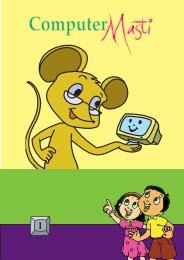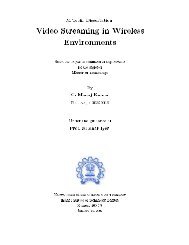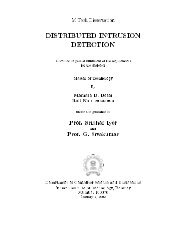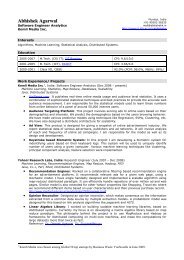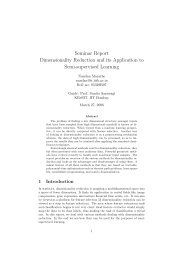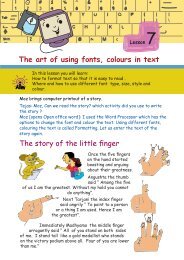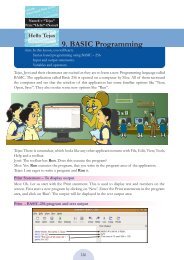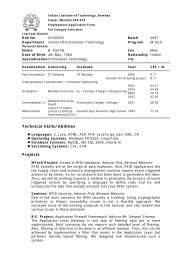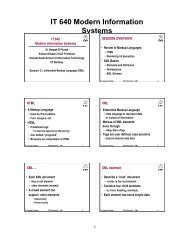worksheets - Indian Institute of Technology, Bombay
worksheets - Indian Institute of Technology, Bombay
worksheets - Indian Institute of Technology, Bombay
Create successful ePaper yourself
Turn your PDF publications into a flip-book with our unique Google optimized e-Paper software.
Moz: Now move the Sprite to the bottom-left corner <strong>of</strong> the stage. Check<br />
x and y again.<br />
Tejas: Oh! Look, now it is x: -159 and y: -82.<br />
Current Sprite Info<br />
Current Sprite Info shows a Sprite’s name, x-y position and direction.<br />
You can also type in a new name for the Sprite.<br />
Direction indicates how the Sprite will turn when it executes a move<br />
instruction.<br />
Direction: 0 = up<br />
Direction: 90 = right<br />
Direction: 180 = down<br />
Direction: -90 = left<br />
Info<br />
Jyoti: Why is x -159? What does it mean?<br />
Moz: Look at this figure. Consider this as<br />
Scratch Stage. What do you observe?<br />
Jyoti: The stage is divided into four squares by a horizontal line<br />
and a vertical line.<br />
Tejas: They are also numbered.<br />
Moz: Good observation. The four squares are called four quadrants.<br />
CONCEPTS<br />
The horizontal line is labeled the x-axis and the vertical line is<br />
labeled the y-axis.These two axes divide the Stage into four<br />
quadrants.<br />
The point at which the two axes meet is the center <strong>of</strong> the Stage<br />
and is called the origin. The origin has x:0 and y:0.<br />
Moz: Now move the mouse pointer to each<br />
corner <strong>of</strong> the stage and note x and y values.<br />
Tejas: The top right corner has x:240 and<br />
y:180 but the top left corner has x -240 and<br />
y:180.<br />
52



